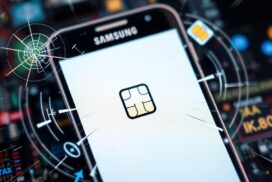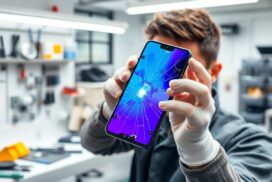Brightness Issues on Samsung Galaxy Note 20: Screen Repair Advice
If you’re a Samsung Galaxy Note 20 user and facing brightness issues with your device’s screen, you’re not alone. Many users have reported experiencing such problems, which can be frustrating and impact the overall user experience. In this article, we provide expert advice on how to repair the brightness of your Samsung Galaxy Note 20 screen.
Our information is gathered from various sources, including user reports and expert recommendations. We aim to equip you with the knowledge and solutions needed to address these common brightness issues.
In the following sections, we will discuss the most common brightness issues on the Samsung Galaxy Note 20, troubleshooting steps, and specific fixes for certain issues. Whether your screen randomly dims, the adaptive brightness feature causes frequent changes, or you face other problems, we have you covered.
By the end of this article, you will have a comprehensive understanding of how to troubleshoot and resolve brightness issues on your Samsung Galaxy Note 20. Let’s dive in and get your device’s screen shining bright once again.
Common Brightness Issues on Samsung Galaxy Note 20
Users of Samsung Galaxy Note 20 have reported several common brightness issues, including the screen randomly dimming, the adaptive brightness feature causing frequent changes in screen brightness, and the screen timeout being too short. These issues can be frustrating, but there are solutions available to address them.
Common Brightness Issues
“My Samsung Galaxy Note 20’s screen keeps randomly dimming, and it’s affecting my user experience.”
“The adaptive brightness on my device is constantly adjusting, making it difficult to read or view content.”
“The screen timeout on my Samsung Galaxy Note 20 is too short, and it goes to sleep too quickly.”
If you’re experiencing any of these common brightness issues on your Samsung Galaxy Note 20, there are steps you can take to resolve them. Below, we’ll explore some potential solutions:
Solutions for Common Brightness Issues
Screen Randomly Dimming
If your Samsung Galaxy Note 20’s screen is dimming randomly, try the following:
- Adjust the brightness manually: Open the Settings app, go to Display, and manually adjust the brightness slider to a comfortable level.
- Disable/disable automatic brightness: In the Settings app, navigate to Display and toggle off the Adaptive brightness feature.
- Check for screen protector issues: If you’re using a screen protector, make sure it is properly aligned and doesn’t interfere with the proximity sensor, as this can trigger unintended dimming.
Adaptive Brightness Changes
If the adaptive brightness feature on your Samsung Galaxy Note 20 is causing frequent changes in screen brightness, consider these solutions:
- Adjust the sensitivity: In the Display settings, look for the Adaptive brightness option and adjust the sensitivity level to reduce the frequency of changes.
- Disable automatic brightness: If the frequent changes are bothersome, you can disable the adaptive brightness feature altogether and manually adjust the brightness level.
Short Screen Timeout
If the screen timeout on your Samsung Galaxy Note 20 is too short, follow these steps:
- Open the Settings app and go to Display.
- Select Screen timeout and choose a longer duration that suits your needs.
By following these solutions, you should be able to address the common brightness issues on your Samsung Galaxy Note 20 and improve your overall user experience.
Note 20 Brightness Troubleshooting Table
| Brightness Issue | Solution |
|---|---|
| Random screen dimming | Adjust brightness manually, disable adaptive brightness, check for screen protector interference |
| Adaptive brightness changes | Adjust sensitivity, disable automatic brightness |
| Short screen timeout | Increase screen timeout duration |
Use this table as a quick reference guide for troubleshooting common brightness issues on your Samsung Galaxy Note 20.
Troubleshooting Brightness Issues on Samsung Galaxy Note 20
When it comes to troubleshooting brightness issues on your Samsung Galaxy Note 20, there are several steps you can take to resolve the problem. By following these guidelines, you can regain control over the brightness settings and ensure an optimal viewing experience.
Check Proximity Sensor and Clean it
If you notice that the screen brightness on your Samsung Galaxy Note 20 is not adjusting properly, it’s important to check if the proximity sensor is blocked by a case or screen cover. Sometimes, external objects can interfere with the sensor’s functionality and lead to brightness issues. Use a dry microfiber cloth to gently clean the sensor and remove any debris.
Adjust Adaptive Brightness Settings
The adaptive brightness feature on your Samsung Galaxy Note 20 may sometimes cause frequent changes in screen brightness, resulting in an inconsistent viewing experience. To address this issue, navigate to the device’s settings and adjust the adaptive brightness level according to your preference. This will help maintain a more stable and desirable brightness level.
Change Screen Timeout Duration
If you find the screen timeout duration on your Samsung Galaxy Note 20 to be too short, causing the display to dim or turn off too quickly, it is recommended to extend the timeout duration. By increasing the screen timeout, you will have more time to interact with your device without the screen dimming or turning off unexpectedly.
“Keep Screen On While Viewing” Feature
The “Keep screen on while viewing” feature on your Samsung Galaxy Note 20 can be helpful in ensuring a consistently bright screen. When activated, this feature prevents the screen from dimming or turning off while you are actively using the device. Access this feature through the device’s settings menu.
Disable Power-Saving Mode
Power-saving mode is a useful feature that helps conserve battery life on your Samsung Galaxy Note 20. However, it can also impact the screen brightness, causing it to be dimmer than desired. To maintain a brighter screen, consider disabling power-saving mode temporarily or adjusting the settings to allow for a higher brightness level.
By following these troubleshooting tips, you can effectively address brightness issues on your Samsung Galaxy Note 20 and enjoy a clearer and more vibrant viewing experience.
| Troubleshooting Steps | Description |
|---|---|
| Check Proximity Sensor and Clean it | Ensure the proximity sensor is not blocked and clean it with a dry microfiber cloth to remove any debris. |
| Adjust Adaptive Brightness Settings | Modify the adaptive brightness level to your preference for a more stable viewing experience. |
| Change Screen Timeout Duration | Extend the screen timeout duration to prevent the display from dimming or turning off too quickly. |
| “Keep Screen On While Viewing” Feature | Activate the “Keep screen on while viewing” feature to maintain a consistently bright screen during device usage. |
| Disable Power-Saving Mode | Temporarily disable power-saving mode or adjust its settings to allow for a higher brightness level. |
Specific Brightness Issues and Fixes on Samsung Galaxy Note 20
The Samsung Galaxy Note 20 may encounter specific brightness issues that can impact user experience. These issues include:
- A green tint on the screen.
- Edge lighting not working properly.
- Random reboots.
- Ghost vibrations.
- Swipe gesture problems.
To address these specific brightness issues, users can try the following fixes:
- Keep the brightness level at a higher setting to mitigate the green tint or edge lighting problems.
- Perform a software update on the device to ensure any known bugs or glitches are resolved.
- For random reboots, check if any recently installed apps are causing conflicts and uninstall them if necessary.
- If experiencing ghost vibrations, try adjusting the notification settings and disabling unnecessary alerts.
- For swipe gesture problems, double-check the touch sensitivity settings and calibrate if needed.
- If none of the above fixes solve the issues, consider performing a factory reset as a last resort. However, keep in mind that this will erase all data on the device, so it’s essential to back up important files beforehand.
For users experiencing brightness-related problems on their Samsung Galaxy Note 20, following these troubleshooting steps can often resolve the issues and improve overall usability.
| Brightness Issue | Possible Solutions |
|---|---|
| Green tint on the screen | Keep brightness at a higher level Perform a software update |
| Edge lighting not working | Keep brightness at a higher level Perform a software update |
| Random reboots | Uninstall problematic apps Perform a factory reset if needed |
| Ghost vibrations | Adjust notification settings Disable unnecessary alerts |
| Swipe gesture problems | Check touch sensitivity settings Calibrate if needed |
Conclusion
Brightness issues can be frustrating for Samsung Galaxy Note 20 users, but there is a solution. By following the troubleshooting steps outlined in this article, users can effectively repair the screen’s brightness. It is important to check if the proximity sensor is blocked, adjust the adaptive brightness settings, and change the screen timeout duration to address common brightness issues.
If the problems persist or worsen, seeking professional assistance for screen repair or considering a replacement device may be necessary. Keeping the software up to date and regularly checking for updates from Samsung is also recommended to ensure optimal performance. Remember, taking these steps can help restore the brightness and enhance the overall user experience with the Samsung Galaxy Note 20.
Stay informed about the latest tips and tricks to prevent and troubleshoot any future brightness issues. By following the provided screen repair advice, Samsung Galaxy Note 20 users can enjoy a vibrant and visually satisfying display on their smartphones.
FAQ
What are some common brightness issues on Samsung Galaxy Note 20?
Common brightness issues on Samsung Galaxy Note 20 include the screen randomly dimming, frequent changes in screen brightness due to the adaptive brightness feature, and a screen timeout that is too short.
How can I troubleshoot brightness issues on my Samsung Galaxy Note 20?
To troubleshoot brightness issues on your Samsung Galaxy Note 20, you can check if the proximity sensor is blocked and clean it with a dry microfiber cloth. You can also adjust the adaptive brightness settings, change the screen timeout duration, activate the “Keep screen on while viewing” feature, and disable power-saving mode.
What specific brightness issues can occur on the Samsung Galaxy Note 20?
Specific brightness issues on the Samsung Galaxy Note 20 include a green tint on the screen and edge lighting not working properly. To address these issues, you can try keeping the brightness at a higher level or perform a software update.
How can I resolve other common issues on my Samsung Galaxy Note 20?
For other common issues on your Samsung Galaxy Note 20, such as random reboots, ghost vibrations, and swipe gesture problems, you can try adjusting settings, uninstalling problematic apps, and performing a factory reset if necessary.
What should I do if the brightness issues on my Samsung Galaxy Note 20 persist or worsen?
If the brightness issues on your Samsung Galaxy Note 20 persist or worsen, it may be necessary to seek professional assistance for screen repair or consider a replacement device. Keep your software up to date and regularly check for updates from Samsung to ensure optimal performance.












